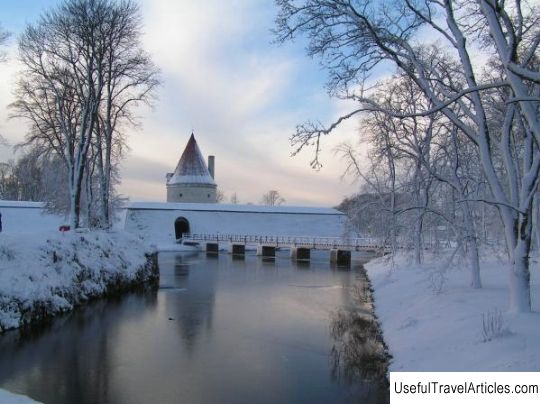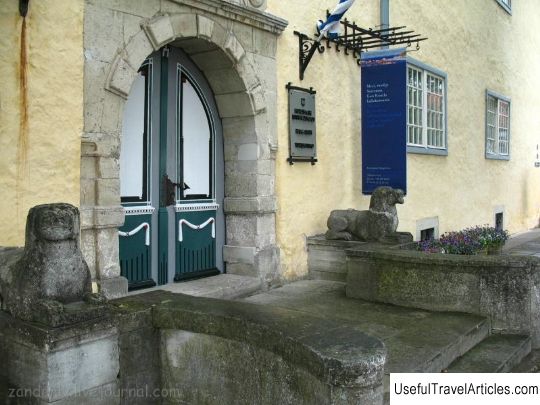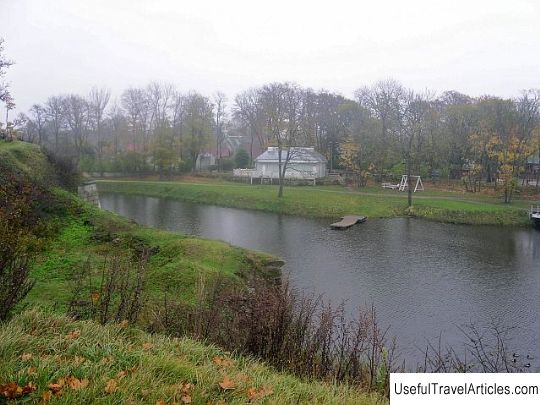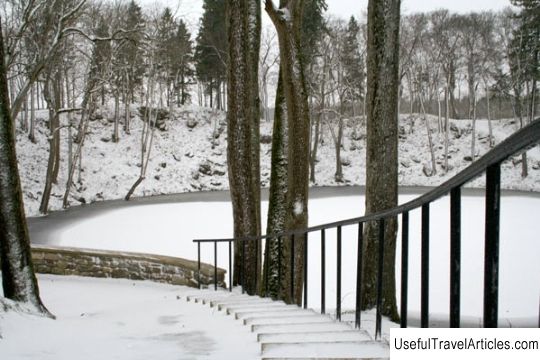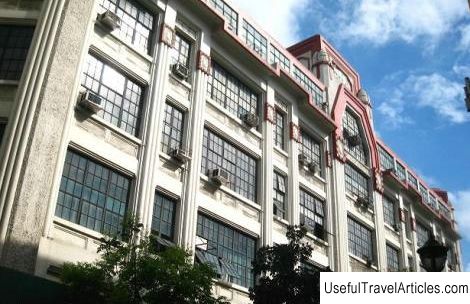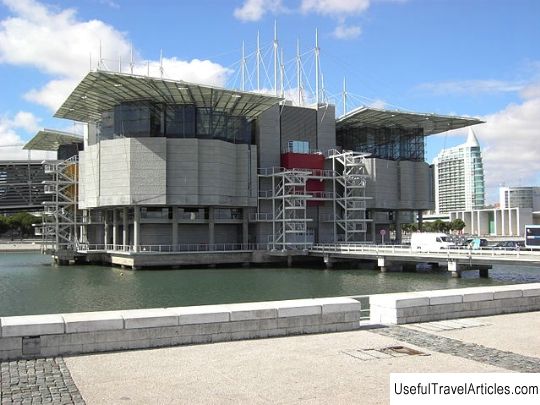Bishops Castle in Kuressaare description and photos - Estonia: Kuressaare
Rating: 8,8/10 (2499 votes) Bishop's Castle in Kuressaare description and photos - Estonia: Kuressaare. Detailed information about the attraction. Description, photographs and a map showing the nearest significant objects. The title in English is Bishop's Castle in Kuressaare. Photo and descriptionThe Episcopal Castle is the pride and beauty of the town of Kuressaare. This is the only castle in the Baltic countries that has been completely preserved in its medieval form to our times. The castle is a square structure, 42x42.5 m in size, with 40-meter watchtowers and mighty bastions. It is assumed that the first fortress was built by the Danes in 1222, in the center of the courtyard of the fortress there was a watchtower, now tower Long Herman. This structure served not only as a watchtower, but could also be the last refuge for a small number of defenders in the event of an enemy invasion of the fortress. It is believed that from the middle of the 14th century the castle was the seat of the Saare-Laanema bishop after Haapsalu ... The main building of the fortress, as we see it today, fell on 1345-1365. In the 1430s, a bypass wall was built around the castle. It was complemented by semicircular towers with loopholes for firearms. In 1559 the fortress of Kuressaare was sold by the last bishop Johann von Munchausen to the possession of the Danish king Frederick II. The Danish king, in turn, handed over the bishopric of Saarema along with the castle of Kuressaare to his younger brother, Duke Magnus. At the end of the 16th century, the first earthen fortifications were erected, at the corners of which were crowned with massive corner bastions. The whole structure was surrounded by water. At the end of the 17th century, bastions and ravelins were erected around the castle (architects P. von Essen and E. Dahlberg). During the Livonian War, the fortress was not affected. During the Great Northern War in 1710, General Boer seized Arensburg, and from now on the city became part of the Russian Empire. However, the fortress was badly damaged (presumably in 1711) during this war, but it was restored. Legends have appeared over the long history of the castle. One of them is called the legend of the walled-up knight. According to legend, the Russian engineer who created the plan for the building of the convention found a walled basement in the eastern corner of the castle courtyard in 1785. In the middle of this room was a table, at which a male skeleton sat in a chair upholstered in leather. When touched, the skeleton, according to legend, collapsed to the floor.However, the art teacher of the local school managed to make a sketch of the discovered find. The remains are believed to belong to a knight, which was walled up alive by order of the bishop during the Reformation (1 half of the 16th century). Since the Catholic Saare-Laane bishop seemed to submit to the Protestant vassals, he turned to the Pope for help. The Pope sent an inquisitor to the seat of the legislator - a Spaniard by birth, whose fortitude and faith the vassals decided to test with the help of a blond girl. And the knight could not resist - fell in love with a girl. The secret was soon revealed - the girl's hair was shaved off and she was sent to the Kaarma monastic monastery for correction. The Spaniard in love decided to try to save the girl, but the letter, which was hidden in a crust of bread, did not end up in the monastery, as planned, but on the bishop's table. Since the inquisitor had completely lost his way, it was decided to brick him up alive in the basement of the Kuressaare castle. Until now, this basement is remembered under the name of the cellar of the walled-up knight. There is another legend called "The Lion's Pit". The Long Hermann tower can be accessed via a bridge through an isolation shaft 10 meters deep. From the bridge you can see toilets or dansker. Previously, the mine was also used as a well for dumping waste. According to legend, the Saare-Laane bishop visited his domain in Saaremaa in spring and autumn. His responsibilities included litigation. After the verdict was pronounced in the wall of the courtroom, the door of the mine opened, and there were kept hungry lions. Condemned to death was thrown there. The lions carried out the sentence immediately, instantly tearing the condemned to pieces. To this day, the mine surrounding the Tower of Long Hermann is called the Lion's Pit. It is believed that Bishop Henrik III found his end in the mine, who was killed during a quarrel with members of the chapter at the castle in 1381. Nowadays, the castle houses a museum and an art gallery, where you can get acquainted with the history of Saaremaa and the city of Kuressaare, as well as learn about the nature of these places. The territory of the fortress is usually used as an open-air stage for various events. The area around the moat has been transformed into a green parkland. Since 2006, 3 workshops have been opened in the protective hall, which once served for defense, - a forge, a ceramic workshop and a glass workshop. In these workshops, you can both watch the work of the craftsmen and try your hand at these crafts, for example, glass blowing.         We also recommend reading Church of Pimen the Great in Novye Vorotniki description and photos - Russia - Moscow: Moscow Topic: Bishops Castle in Kuressaare description and photos - Estonia: Kuressaare. |
